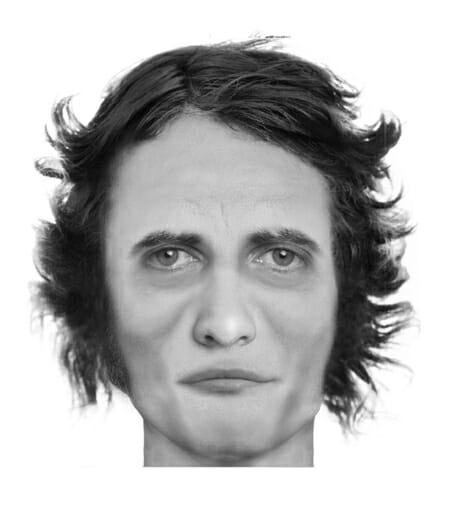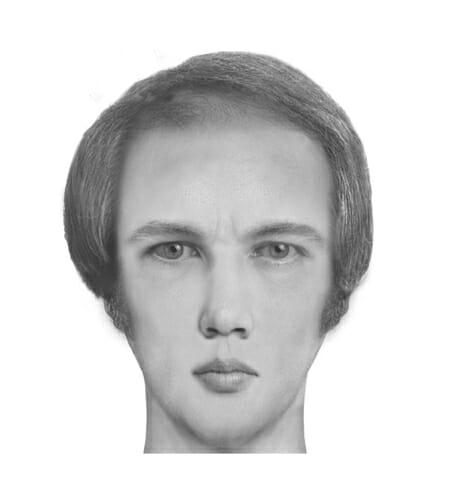Quali sono i veri volti dei protagonisti dei romanzi? L’illustratore Brian Joseph Davis ne ha tracciato gli identikit usando il programma che utilizzano i poliziotti e le descrizioni dei personaggi che si trovano nei libri. Ecco il sorprendente risultato…
Quali sono i veri volti dei protagonisti dei romanzi? Ogni lettore li immagina a suo modo, in parte basandosi sulla descrizione dell’autore e aggiungendo una buona dose di fantasia. Spesso accade che, le volte in cui leggiamo il libro dopo aver visto il film, il personaggio abbia ormai il volto dell’attore che lo interpreta sul grande schermo.
Come ha recentemente raccontato Linkiesta.it, l’illustratore Brian Joseph Davis ha deciso di provare a dare un volto reale ai protagonisti dei suoi libri preferiti e per farlo ha usato un programma utilizzato anche dalla polizia per tracciare gli identikit. Il risultato è sorprendente:

Emma Bovary, descritta da Flaubert come “pallida ovunque, bianca come un foglio di carta”, con “gli occhi che ti guardano in modo vago”.

Questo è il volto di Frankestein (il dottore, da non confondere con la creatura) secondo la descrizione di Mary Shelley.

Lady Constance Chatterley aveva, nel libro di D.H. Lawrence, 23 anni e “occhi grandi, che vagavano ovunque”, capelli “ricci e castani”, un aspetto “di campagna” e le “lentiggini”.

Questo elegante signore, con lunghi baffi che ricordano un pistolero western, altri non è che il temutissimo Conte Dracula, come raccontato da Bram Stoker.

Signore e signori, vi presentiamo Jack Torrance, protagonista di Shining di Stephen King… un po’ diverso da Jack Nicholson, no?
![Patricia Highsmith was born on January 19th, 1921. Above is a repost of the composite for Tom Ripley, from her novel The Talented Mr. Ripley. [Ripley] combed his light-brown hair neatly in front of the mirror, and set off for Radio City. He had always thought he had the world’s dullest face, a thoroughly forgettable face with a look of docility that he could not understand, and a look also of vague fright that he had never been able to erase. A real conformist’s face, he thought…Really it was only his darker hair that was very different from Dickie. Otherwise, his nose—or at least its general form—his narrow jaw, his eyebrows if he held them right. He wasn’t really worried. Tom had at first amused himself with an eyebrow pencil–Dickie’s eyebrows were longer and turned up a little at the outer edges–and with a touch of putty at the end of his nose to make it longer and more pointed, but he abandoned these as too likely to be noticed. The main thing about impersonation, Tom thought, was to maintain the mood and temperament of the person one was impersonating, and to assume the facial expressions that went with them. The rest fell into place…He might play up Tom a little more, he thought. He could stoop a little more, he could be shyer than ever, he could even wear horn-rimmed glasses and hold his mouth in an even sadder, droopier manner to contrast with Dickie’s tenseness.](https://41.media.tumblr.com/7a625181050df72a1a94c3faabb13192/tumblr_mzi70772KN1r3ke0zo1_500.jpg)
Questo è il volto del vero Tom Ripley (questa volta non tanto diverso da Matt Damon, attore che lo ha reso celebre sul grande schermo) secondo la descrizione di Patricia Highsmith in Il talento di Mr Ripley.

Ovviamente, per il ritratto del Dottor Jekyll e Mr Hide di Robert Louis Stevenson, l’illustratore non poteva che creare una GIF. Un po’ meno “diabolico” di quanto ci potessimo aspettare, no?

E infine, uno dei personaggi più rappresentati in assoluto: Mr Sherlock Holmes, come è descritto da Watson in Uno studio in rosso, primo libro di Sir Arthur Conan Doyle.



